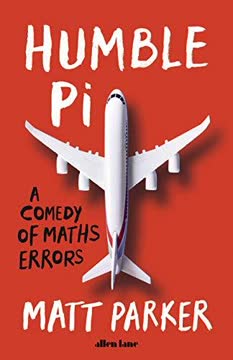Key Takeaways
1. Exploiting Proposition, Odds, and NAP Bets in Everyday Life
AFRI-,i)m- So RIGHTLY POINTS OUT, THERE REALLY IS ONLY ONE KIND OF BAR bet when he's playing: a losing one for the mug.
Three Types of Bets. The world of hustling revolves around three primary types of bets: Proposition Bets, Odds Bets, and NAP Bets. Proposition Bets involve seemingly impossible feats, Odds Bets stack the odds heavily against the mark, and NAP (Not A Prayer) Bets offer absolutely no chance of winning. Understanding these categories is the first step in avoiding becoming a victim.
The Prop Bet Setup. Prop bets often rely on specialized knowledge or obscure facts, making them difficult to counter without prior awareness. The hustler uses a system known as hook, line, and sinker to reel in their target. The hook creates interest, the line presents the seemingly impossible challenge, and the sinker seals the deal, leaving the mark with empty pockets.
Real-World Application. These bets aren't confined to smoky backrooms; they can appear anywhere, from casual bar conversations to seemingly innocent challenges among friends. By recognizing the structure and psychology behind these bets, you can avoid falling prey to seemingly harmless wagers that are anything but.
2. Unveiling the Art of Odds Manipulation
Odds are the exact probability that one event or another will happen.
Odds vs. Chance. A clear understanding of the difference between odds and chance is crucial for avoiding manipulation. Chance is a belief in luck, while odds are the mathematical probabilities of an event occurring. Hustlers exploit the mug's reliance on chance, twisting the odds to ensure their own victory.
Twisting the Odds. By subtly altering the odds, hustlers can create bets that appear favorable but are mathematically rigged against the mark. Examples include card games where the odds of winning are misrepresented or coin tosses where the payout is skewed to favor the hustler. Recognizing these manipulations requires a keen understanding of probability and a healthy dose of skepticism.
Mathematical Deception. Many odds bets rely on complex calculations that are difficult for the average person to grasp. Hustlers often use this to their advantage, presenting misleading figures or omitting crucial information. Carrying a calculator and verifying the odds yourself can be a valuable tool in protecting your bankroll.
3. Mastering the Freeze Out and NAP Bets for Guaranteed Wins
They use a technique called the Freeze Out.
The Big Freeze Out. To guarantee a payout, hustlers employ the "Freeze Out," where a total sum is gambled over a series of events. This allows the odds to grind down the mark's money over time. The hustler appears easy-going, but the structure ensures their eventual win.
The Game of NIM. NAP bets, or "Not A Prayer" bets, involve games of pure skill or absolute trickery, leaving no room for luck. A prime example is NIM, where players take turns removing matches, and the last player to pick up a match loses. The hustler uses key numbers and hidden matches to guarantee a win.
The Game of 31. Another deceptive NAP bet is the Game of 31, where players draw cards, and the one reaching 31 (or closest without exceeding) wins. The hustler manipulates the game by controlling key numbers and card availability, ensuring the mark's loss even after "teaching" them the winning strategy.
4. The Psychology and Mechanics of Con Games
"You don't play the game, you play the man."
The Drunken Paw. Con games often exploit human weaknesses like greed and the desire for revenge. In "The Drunken Paw," the mark is lured into a card game with a seemingly inept drunk, only to be swindled out of their money through stacked decks and calculated deception. The key is to recognize the setup and avoid engaging in the first place.
The Crossed Deck. The "Crossed Deck" scam targets amateur cheats, offering them a chance to partner with a skilled hustler. The mark invests their own money, only to be double-crossed and left with nothing. This con highlights the dangers of seeking easy money and the importance of skepticism.
The Watch Fob Off. This con plays on the mark's desire for a bargain and their willingness to take advantage of someone else's misfortune. By staging a scenario involving a lost watch and a desperate seller, the hustler manipulates the mark into buying a worthless item.
5. Card Cheating Techniques: From Marking to Sleight of Hand
"If you ever plaij fiti'e aces, pou'll soon he platyinq a harp."
Marked Cards. Card cheats employ various methods to mark cards, from subtle shades and blockouts to more obvious line work and cutouts. Spotting these marks requires careful observation and knowledge of the different techniques. However, even with this knowledge, it can be difficult to detect marked cards during a game.
Belly Strippers and Others. Strippers are cards that have been shaved slightly out of shape, allowing the cheat to control their position in the deck. Different types of strippers, such as belly strippers, side strippers, and end strippers, require varying degrees of skill to use and can be difficult to spot.
Sleight of Hand. Card cheats use a variety of sleight-of-hand techniques to manipulate the deck, including stacking cards, false shuffles, false cuts, peeking, and dealing from the bottom or center of the deck. These moves require years of practice to master and are often undetectable to the untrained eye.
6. Dice Manipulation: From Fakes to Controlled Rolls
"Nothing is impossible iftjou cheat!"
Switching Dice. Dice cheats often switch in gaffed dice for straight dice during a game. This can be done using a variety of techniques, such as the change over, the thumb switch, and the palm switch. To avoid being cheated, it is important to be aware of these techniques and to watch the dice carefully.
Freddy's Fakes. There are many different types of faked dice, including percentage dice, loaded dice, and juiced dice. Percentage dice are shaped to favor certain numbers, while loaded dice are weighted to make certain numbers more likely to come up. Juiced dice are controlled by an electromagnetic field.
Controlled Rolls. Some dice cheats are able to control the outcome of a roll by using a variety of techniques, such as the slide, the drop, and the pique or whip shot. These techniques require a great deal of skill and practice, but they can be very effective in the hands of an expert.
7. Navigating the Fairground: A Guide to Avoiding Scams
"If money is involved, it's a sure bet that cheating not only could occur, but probably already has."
Hanky Panks. These games offer seemingly easy ways to win prizes, but the odds are heavily stacked against the player. Examples include four big cards, dartboard champs, and the horse race. The key is to recognize that these games are designed to make money for the operator, not the player.
Arcades from Hell. Arcades are filled with machines that are designed to be addictive and difficult to win. Examples include fruit machines, arcade machines, penny falls, and grabbers. The best way to avoid losing money in arcades is to avoid playing the machines altogether.
Down and Dirty. These games are often found in the less reputable areas of the fairground and are even more difficult to win than the Hanky Panks. Examples include sitys, six little bottles, three little bottles, and the cat rack. The best way to avoid losing money on these games is to walk right past them.
8. The Art of the Grift: Cons, Scams, and Long Cons
"Life is only a game of poker, played well or ill Some hold four aces, some draw or fill Some make a bluff and oft get there While others ante and never hold a pair"
Shorting the Change. This involves the cheat giving the victim less change than they are owed. This can be done by palming coins, double price tickets, the leave, take it or leave it, chat change, and cash rides. To avoid being shortchanged, always count your change carefully before putting it away.
The Razzle Dazzle. This involves a game where the player rolls balls down a ramp and tries to land them in numbered slots. The odds are heavily stacked against the player, and the operator often uses miscounts and variations to cheat them out of their money. To avoid losing money on the razzle dazzle, simply walk away.
Jam Auctions. This involves a scam where the operator auctions off items to the highest bidder, but then adds on extra fees and charges, making the final price much higher than the initial bid. To avoid being scammed at a jam auction, simply don't participate.
Last updated:
Review Summary
How to Cheat at Everything receives mixed reviews. Readers find it informative about various cons and scams, particularly in gambling and carnival games. Many appreciate the insights into cheating techniques and how to avoid being conned. However, some criticize the dated content, poor editing, and unclear writing. The book is seen as more useful for understanding scams than as a how-to guide. Opinions vary on its entertainment value, with some finding it fascinating and others tedious, especially in sections on card and dice manipulation.
Similar Books










Download PDF
Download EPUB
.epub digital book format is ideal for reading ebooks on phones, tablets, and e-readers.




